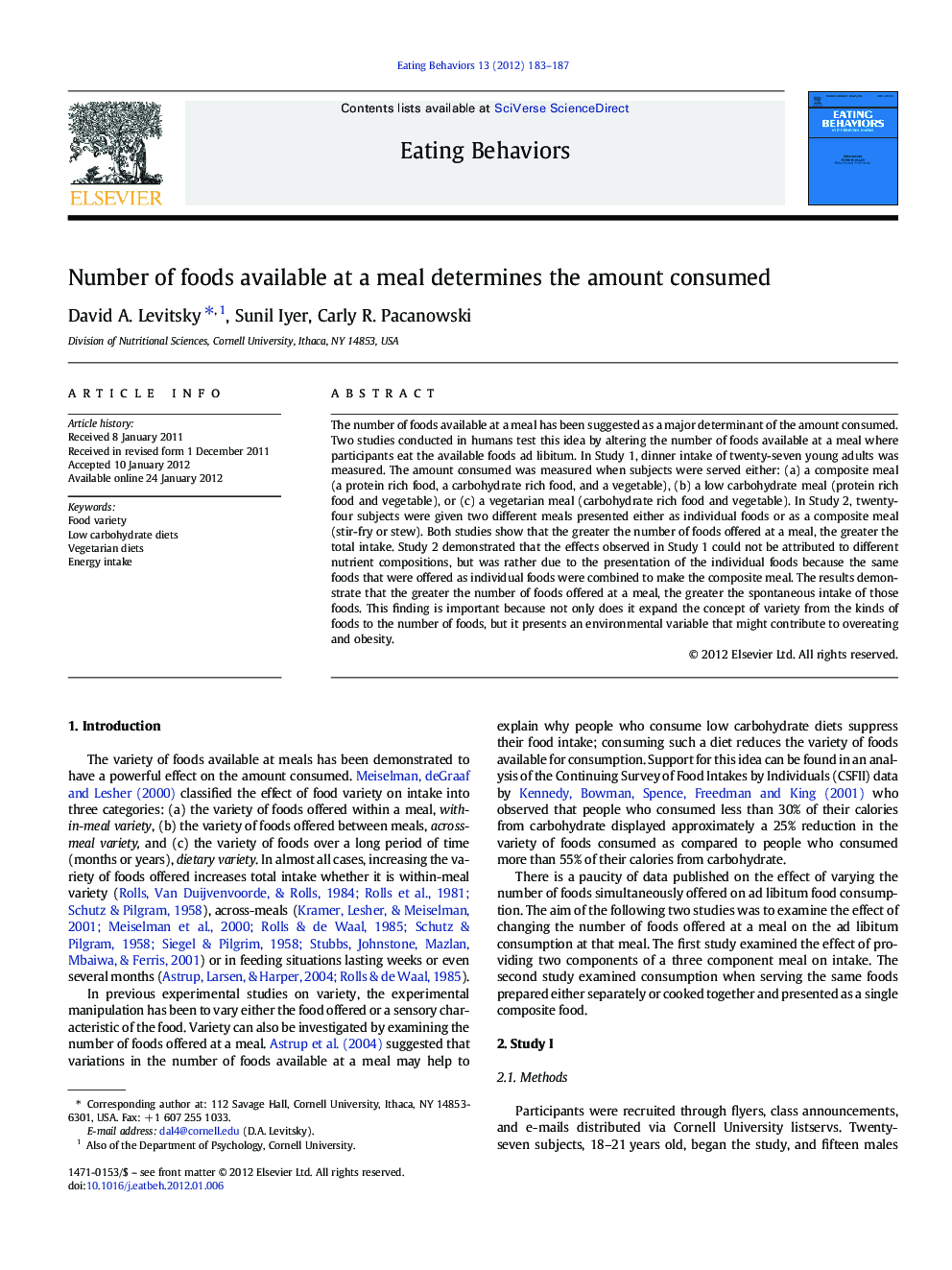| Article ID | Journal | Published Year | Pages | File Type |
|---|---|---|---|---|
| 906564 | Eating Behaviors | 2012 | 5 Pages |
The number of foods available at a meal has been suggested as a major determinant of the amount consumed. Two studies conducted in humans test this idea by altering the number of foods available at a meal where participants eat the available foods ad libitum. In Study 1, dinner intake of twenty-seven young adults was measured. The amount consumed was measured when subjects were served either: (a) a composite meal (a protein rich food, a carbohydrate rich food, and a vegetable), (b) a low carbohydrate meal (protein rich food and vegetable), or (c) a vegetarian meal (carbohydrate rich food and vegetable). In Study 2, twenty-four subjects were given two different meals presented either as individual foods or as a composite meal (stir-fry or stew). Both studies show that the greater the number of foods offered at a meal, the greater the total intake. Study 2 demonstrated that the effects observed in Study 1 could not be attributed to different nutrient compositions, but was rather due to the presentation of the individual foods because the same foods that were offered as individual foods were combined to make the composite meal. The results demonstrate that the greater the number of foods offered at a meal, the greater the spontaneous intake of those foods. This finding is important because not only does it expand the concept of variety from the kinds of foods to the number of foods, but it presents an environmental variable that might contribute to overeating and obesity.
► We examined the effect the variety of foods presented on energy intake. ► The carbohydrate or protein portion was removed resulting in total energy consumed. ► Serving foods separately resulted in greater intake than serving them together. ► Results expand the concept of food variety to foods selected within a meal.
